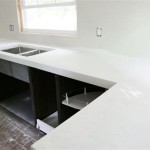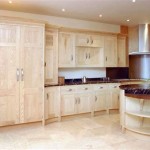Black Stained Kitchen Cabinets: A Comprehensive Guide
Black stained kitchen cabinets are a bold and increasingly popular design choice for modern and traditional homes alike. This aesthetic offers a sophisticated alternative to painted cabinets, showcasing the natural grain of the wood while adding depth and drama to the kitchen space. Understanding the nuances of black stain, the types of wood best suited for this treatment, and the impact on the overall kitchen design is crucial when considering this option.
The appeal of black stained cabinets lies in their versatility. They can be integrated into a minimalist modern kitchen to amplify clean lines and create a high-contrast look with light countertops and backsplash. Conversely, they can add a touch of elegance and depth to a more traditional kitchen style, especially when paired with ornate hardware and detailed trim. The key to successfully implementing black stained cabinets is to consider the specific wood species, the application process, and the interplay with other elements in the kitchen.
Understanding the Black Staining Process
The process of staining wood black is distinct from painting it. Painting typically obscures the wood grain, while staining is designed to penetrate the wood and enhance its natural texture. A stain is a semi-transparent colorant that allows the wood grain to remain visible, imparting color while still showcasing the organic patterns beneath. This characteristic is what gives black stained cabinets their unique character and distinguishes them from painted black cabinets.
Before staining, the wood surface must be properly prepared. This involves sanding the wood to a smooth finish to ensure even stain absorption. Any existing finish must be completely removed. The type of wood being used will dictate the grit and type of sandpaper required. Softer woods require a finer grit to avoid damaging the surface, while harder woods can withstand more aggressive sanding.
The application of the black stain requires careful attention to detail. Multiple thin coats are generally preferred over one thick coat. This allows for better control over the color saturation and prevents blotching, which can occur when the stain is absorbed unevenly. Each coat of stain should be allowed to dry completely before the next is applied, following the manufacturer's instructions. Wiping the stain after application can also help to even out the color and enhance the wood grain.
After the stain has dried, a protective topcoat is essential. This helps to prevent scratches, moisture damage, and fading. Common topcoat options include polyurethane, lacquer, and varnish. The choice of topcoat will depend on the desired level of durability, sheen, and application method. Polyurethane is known for its durability and resistance to water damage, making it a popular choice for kitchen cabinets. Lacquer provides a smooth, even finish but may be less durable than polyurethane. Varnish offers a balance of durability and ease of application.
The type of stain used is also an important consideration. Oil-based stains tend to penetrate the wood better and provide a richer, more even color. However, they require longer drying times and can be more difficult to clean up. Water-based stains are easier to clean up and dry faster, but may not penetrate as deeply as oil-based stains. Gel stains are a thicker option that can be useful for staining wood with uneven grain or for applying stain to vertical surfaces, as they are less likely to drip.
Choosing the Right Wood for Black Stain
Not all wood species are created equal regarding their suitability for black staining. Woods with prominent grain patterns and natural variations in color tend to look best when stained black. The grain becomes more defined and highlighted, adding depth and visual interest to the cabinets. Certain woods, however, may absorb the stain unevenly, resulting in a blotchy or inconsistent finish.
Oak is a popular choice for black stained cabinets due to its open grain pattern. The characteristic grain of oak becomes more pronounced when stained black, creating a distinctive and visually appealing texture. Both red oak and white oak can be effectively stained black, although the specific grain pattern will differ slightly between the two. Red oak has a more reddish hue and a slightly more open grain, while white oak is more neutral in color and has a tighter grain.
Maple is another suitable option, known for its smooth, even grain. While maple does not have as prominent a grain pattern as oak, its uniform texture allows for a consistent and even stain application. This makes maple a good choice for those who prefer a more subtle and refined look. However, maple can sometimes be prone to blotching, so proper surface preparation and careful stain application are essential.
Cherry wood offers a rich, reddish-brown hue that can be effectively stained black. The natural color of cherry adds depth and warmth to the black stain, resulting in a sophisticated and elegant look. Cherry wood is also known for its smooth grain and consistent texture, making it relatively easy to stain evenly. However, cherry wood can be more expensive than other wood species, such as oak or maple.
Woods with tight grains, such as birch or pine, can be more challenging to stain black. These woods tend to absorb stain unevenly, resulting in a blotchy or inconsistent finish. While it is possible to stain these woods black, it requires careful surface preparation and the use of a pre-stain wood conditioner to help even out the absorption of the stain.
Ultimately, the best wood species for black stained cabinets will depend on personal preference and the desired aesthetic. Considering the grain pattern, color, and texture of the wood is crucial in making the right choice.
Designing with Black Stained Kitchen Cabinets
Black stained kitchen cabinets create a dramatic and eye-catching focal point in any kitchen design. However, integrating them successfully requires careful consideration of the surrounding elements. The color palette, countertop material, hardware, and lighting all play a crucial role in creating a cohesive and balanced look.
Countertops are a key element to consider when designing with black stained cabinets. Light-colored countertops, such as white quartz or marble, create a high-contrast look that accentuates the drama of the black cabinets. The light countertops reflect light and help to brighten the space, preventing the black cabinets from making the kitchen feel too dark. Dark countertops, such as black granite or soapstone, can also be used, but it is important to ensure that there is enough natural or artificial light to prevent the kitchen from feeling too somber.
The choice of hardware can significantly impact the overall aesthetic of black stained cabinets. Brass or gold hardware adds a touch of elegance and warmth, while silver or stainless steel hardware creates a more modern and sleek look. Black hardware can also be used for a monochromatic look, but it is important to choose hardware with a subtle texture or sheen to prevent it from blending in too much with the cabinets.
Backsplashes can serve as a focal point and add personality to a kitchen with black stained cabinets. A white subway tile backsplash offers a classic and timeless look, while a patterned tile backsplash can add visual interest and character. Glass tile backsplashes can reflect light and brighten the space, while natural stone backsplashes add texture and warmth. The color and texture of the backsplash should complement the cabinets and countertops while also reflecting the overall style of the kitchen.
Lighting is essential in any kitchen, but it is especially important when using black stained cabinets. Black cabinets absorb light, so it is crucial to incorporate ample lighting to brighten the space and prevent it from feeling too dark. A combination of ambient, task, and accent lighting is ideal. Ambient lighting provides overall illumination, task lighting focuses on specific work areas, and accent lighting highlights architectural features or decorative elements. Under-cabinet lighting is particularly useful for illuminating countertops and making it easier to work in the kitchen. Pendant lights over the island or peninsula can add a touch of style and provide additional lighting.
Furthermore, the overall layout and style of the kitchen should be considered when incorporating black stained cabinets. In a small kitchen, it is important to use lighter colors on the walls and flooring to prevent the space from feeling cramped. In a large kitchen, black stained cabinets can be used to define different zones and create a sense of depth. The style of the cabinets should complement the overall style of the home. For example, shaker-style cabinets are a classic choice that works well in both traditional and modern kitchens, while slab-front cabinets offer a more contemporary look.
Incorporating natural elements, such as wood accents or plants, can help to soften the severity of black stained cabinets and create a more inviting atmosphere. Wood open shelving, butcher block countertops, or wooden cutting boards can add warmth and texture to the kitchen. Plants can add a touch of life and color, while also helping to purify the air. The addition of natural elements can help to create a balanced and harmonious kitchen design.

Black Stained Kitchen Cabinets Home Furniture Design Simple

Black Stained Shaker Kitchen Cabinets Solid Wood Cabinet With

Transitional Black Maple Kitchen Cabinets In Custom Finish

Black Stained Shaker Kitchen Cabinets Solid Wood Cabinet With Norway

Black Stain For Kitchen Cabinets

20 Black Kitchen Cabinet Ideas

Gray Stain Kitchen Cabinet Design

Designers Recommend The 8 Best Black Paints For Kitchen Cabinets In 2024

16 Kitchen Design Ideas For Black Cabinets Lily Ann

Black Kitchen Cabinets Offer Elegance And Style
Related Posts








